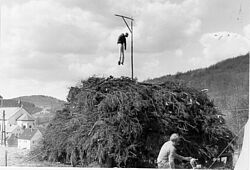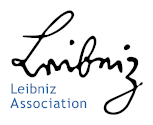- The Institute
- Research
- Dictatorships in the 20th Century
- Democracies and their Historical Self-Perceptions
- Transformations in Most Recent History
- International and Transnational Relations
- Edited Source Collections
- Dissertation Projects
- Completed Projects
- Dokumentation Obersalzberg
- Center for Holocaust Studies
- Berlin Center for Cold War Studies
- Publications
- Vierteljahrshefte
- The Archives
- Library
- Center for Holocaust Studies
- News
- Dates
- Press
- Recent Publications
- News from the Institute
- Topics
- Munich 1972
- Confronting Decline
- Feminist, Pacifist, Provocateur
- Der Mauerbau als Audiowalk
- Digital Contemporary History
- Transportation in Germany
- Envisaged Futures at the End of the Cold War
- From the Reichsbank to the Bundesbank
- German Federal Chancellery
- History of Sustainabilities: Discourses and Practices since the 1970s
- Changing Work
- Democratic Culture and the Nazi Past
- The History of the Treuhandanstalt
- Foreign Policy Documentation (AAPD)
- Dokumentation Obersalzberg
- Hitler, Mein Kampf. A Critical Edition
- "Man hört, man spricht"
- Dictatorships in the 20th Century
- Democracies and their Historical Self-Perceptions
- Transformations in Most Recent History
- International and Transnational Relations
- Edited Source Collections
- Dissertation Projects
- Completed Projects
- Dokumentation Obersalzberg
- Center for Holocaust Studies
- Berlin Center for Cold War Studies
The Judas Fire. History and Present of an Anti-Semitic Easter Custom in the German-Speaking World
Employees (IfZ):
Dr. Andreas Rentz
Projektinhalt:
This project examines the origins and development of the Judas Fire, an internationally widespread Easter custom with an anti-Semitic character. As recently as 2019, the "Judas Court" in Pruchnik, Poland, caused an international scandal when a Judas figure, styled with a hooked nose and Orthodox hair, was burned. Similar customs also exist in German-speaking countries, but until now there has been no scholarly examination of the phenomenon. The following project aims to address this desideratum.
The following questions arise: Under which circumstances did the Judas fire originate and how did it develop and change in the course of time? What social function did it have, especially at the time of National Socialism? How and why did the narrative of a supposedly pagan origin emerge? And last but not least: To what extent can it be qualified as anti-Semitic? The project therefore traces the historical origins and developments of this custom, which is still practiced, and thus contributes to historical research on anti-Semitism in an area that has never been systematically studied before.
These questions can only be answered by an interdisciplinary methodological approach, which is to be located in historical ritual research. Spatially, the object of study is limited to the German-speaking area, but it takes into account not only the present-day states of Germany and Austria, but also the regions of Silesia, Sudetenland, and Alsace-Lorraine, which belonged to the former German Reich. Temporally, the entire history of the Judas fire is to be covered from its earliest evidence in the 17th century to the 20th century, with a focus on the late 19th and 20th centuries due to the much better source material. Since the custom is still practiced today, the project is also relevant to the present day of anti-Semitism.






